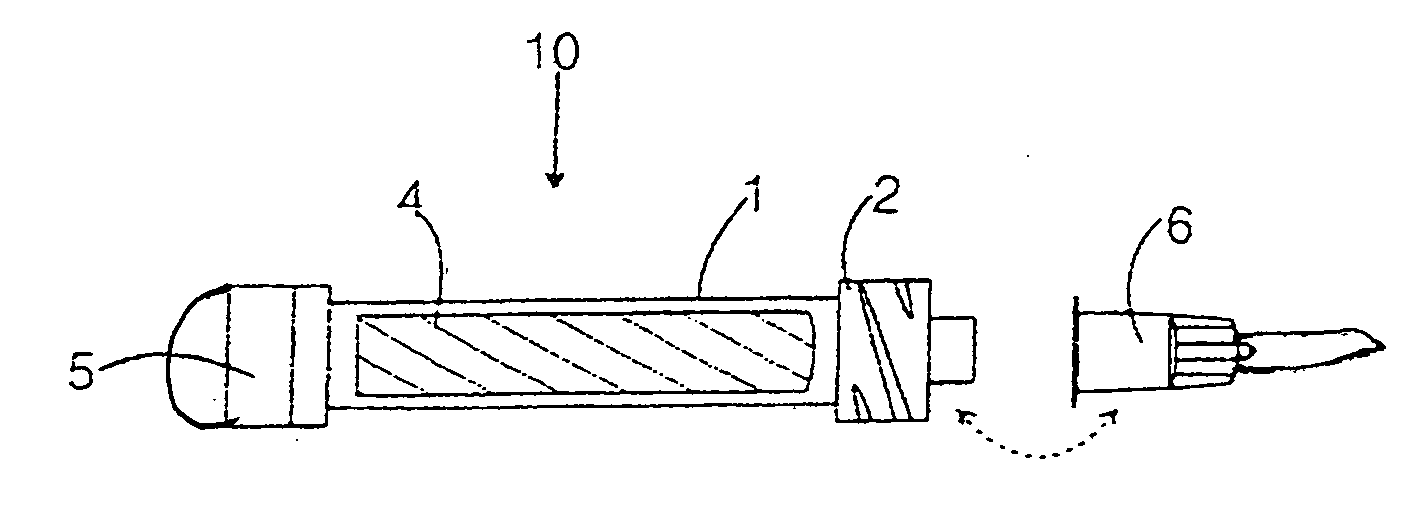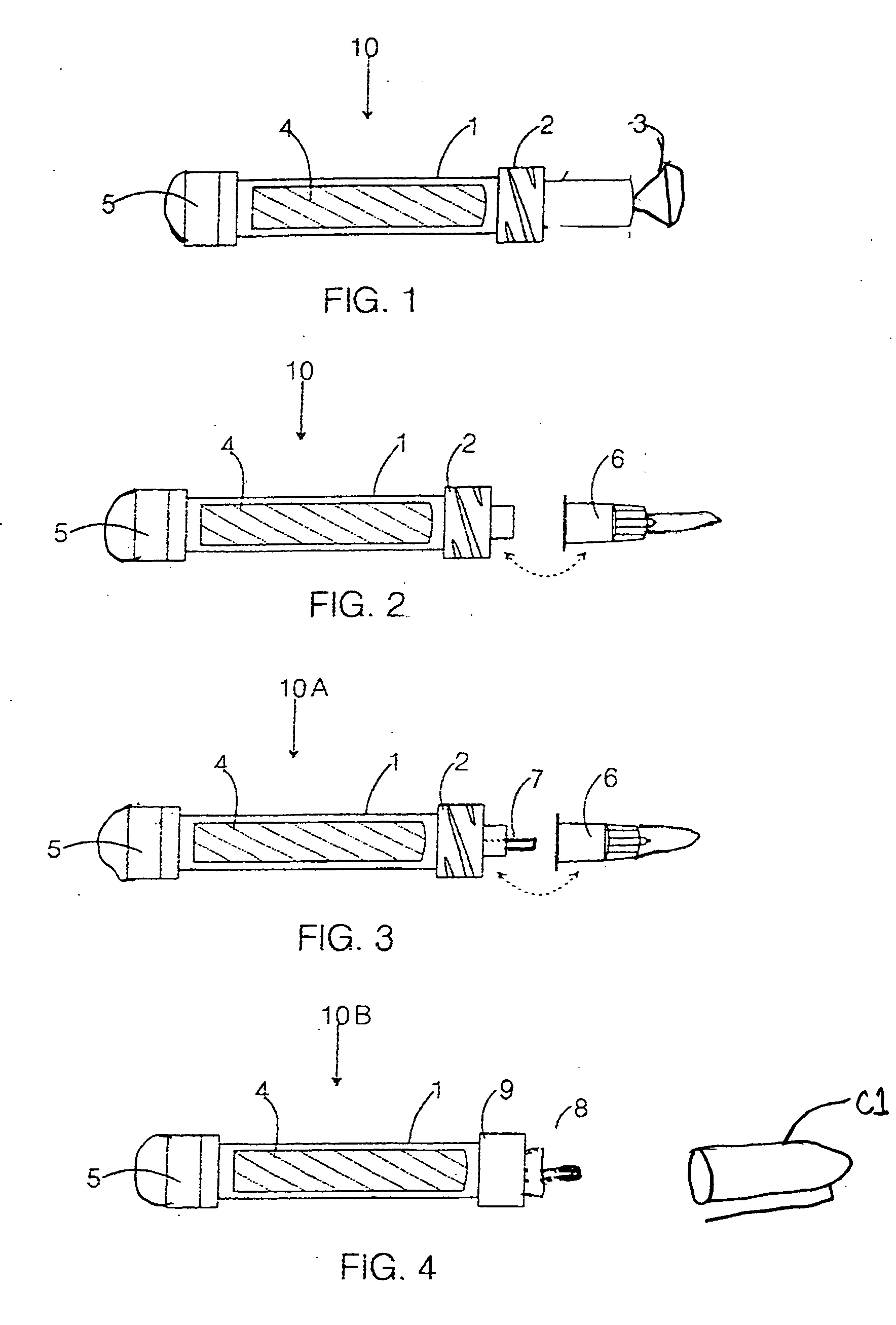Skin-marking devices and their use
- Summary
- Abstract
- Description
- Claims
- Application Information
AI Technical Summary
Benefits of technology
Problems solved by technology
Method used
Image
Examples
Embodiment Construction
[0024] The present invention generally relates to an anti-microbial growth-inhibiting, skin-marking device for applying a marking agent to the skin of a patient who is to undergo a medical procedure such as radiation therapy and the like.
[0025] To assist in understanding the present invention, an illustrated embodiment of the present invention is presented, as well as some terms that may generally be defined. The preferred embodiment of the marking device of this invention consists of four parts or elements shown separately in FIGS. 1-3, which, when assembled as shown in FIG. 4, form a marking device 10 suitable for marking skin or proteinaceous surface with an anti-microbial dye solution. The housing, solvent tube, special cap resistant to mold and mildew and nib elements are the same structurally as those of a commercially available marking device. The marking device of this invention differs therefrom by the chemical employed as the marking compound and by being impregnated in t...
PUM
 Login to View More
Login to View More Abstract
Description
Claims
Application Information
 Login to View More
Login to View More - R&D
- Intellectual Property
- Life Sciences
- Materials
- Tech Scout
- Unparalleled Data Quality
- Higher Quality Content
- 60% Fewer Hallucinations
Browse by: Latest US Patents, China's latest patents, Technical Efficacy Thesaurus, Application Domain, Technology Topic, Popular Technical Reports.
© 2025 PatSnap. All rights reserved.Legal|Privacy policy|Modern Slavery Act Transparency Statement|Sitemap|About US| Contact US: help@patsnap.com


